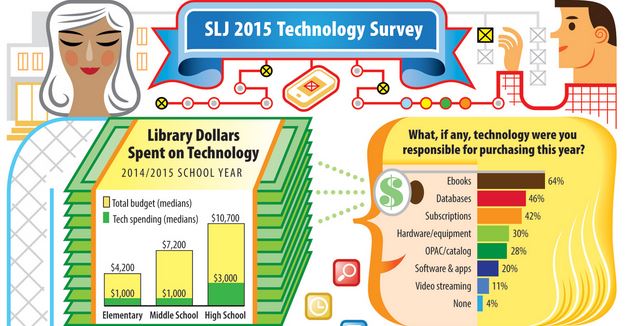
School Library Journal’s 2015 Technology survey of 1,259 school librarians provides insight into the positive and negative effects that technology is having on school libraries. On the positive side, the survey suggests that school librarians are more enthusiastic than ever about incorporating tech as a component of teaching and learning. Makerspaces, 3-D printers, and coding skills were cited as the most coveted tech resources. In fact, more than a third (38%) of respondents reported having maker activities and technology already, while another 13% said they would be adding these features in the next year. School librarians are also quite confident in their own advocacy of technology, with nearly two-thirds (64%) expressing that they see themselves as tech leaders in their schools.
School librarians’ use of applications for instruction and social media for providing information and resources has continued to increase. Application use has increased from 57% in 2013 to 71% in 2015, and the use of social media for information sharing shot up from 59% in 2013 to 76% in 2015.
Yet despite this rapidly growing interest and demand for technology many school libraries are seeing budgets fall short of their need. In particular, the amount of bandwidth is becoming a concern. While nearly all (97%) of the schools surveyed have Wi-Fi, the speed of connection is comparable to many private homes. Only 63% of school librarians surveyed deemed their bandwidth access adequate, compared to 82% in 2013. In addition, the funding to improve these services is often stagnant at best.
It is almost certain that the supply of digital information will continue to skyrocket along with the demand to complement these resources with technology-based instruction. School librarians and those who partner with them will need to combine advocacy efforts with creative solutions for how to stretch funds to accommodate the need for more tech-based learning.
Read the full SLJ report on technology in school libraries here.
Note: This post is part of our series, “The Weekly Number.” In this series, we highlight statistics that help tell the story of the 21st-century library.